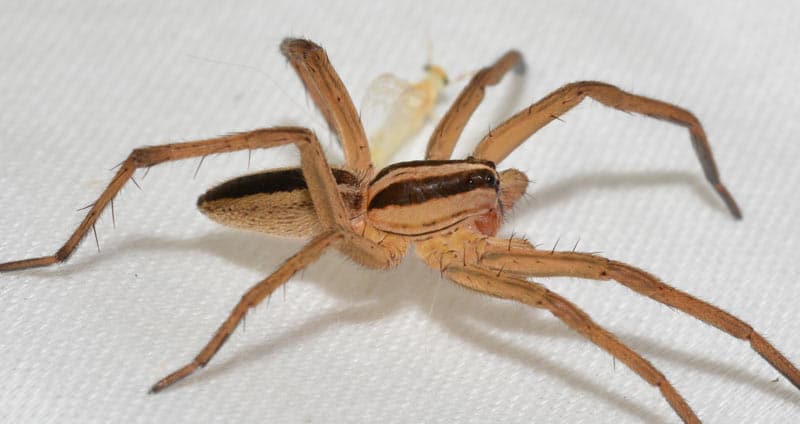The Rabid Wolf Spider, or Rabidosa rabida, possesses perhaps one of the most intimidating and frightening names a spider can have.
Fortunately, it isn’t considered rabid because of its thirst for blood or ability to pass on rabies. It was given its name due to its ability to move incredibly fast and erratically if it needs to.
Therefore, while this spider seems like it would be a threat, it’s actually a great creature to have around due to its friendlier disposition and pest control abilities.
Table of Contents
At A Glance
| Scientific Name | Rabidosa rabida |
| Distribution | North America from Maine to Florida and west to Texas |
| Habitat | Holes and rubbish in forests and cotton fields |
| Size | 1/2″ to 1″ |
| Bite | Non-threatening |
| Lifespan | 1-2 years |
Rabid Wolf Spider Appearance
Appearance-wise, there aren’t many features that differentiate the Rabid Wolf Spider from many of the other genus and species that exist in the wolf spider family classification.
Female Rabid Wolf Spiders grow to be 3/5″ to 1″, while males measure slightly smaller around 1/2″. Their total legspan can take them to about 3″, or slightly smaller than an adult male’s palm.
The coloration of this spider is basic but very effective in helping them blend into their surroundings. Most of its body is a light brown color, with its cephalothorax and abdomen being slightly lighter than its legs.
The back of the spider features several thick, dark brownish-black parallel lines that alternate in color from the front half to the back half that make it distinct and easy to spot.
The carapace has two prominent lines running parallel to each other, while the abdomen primarily has a single line running down the middle of it.
Additionally, these spiders have eight eyes, with four of them taking on a unique appearance similar to a mustache.
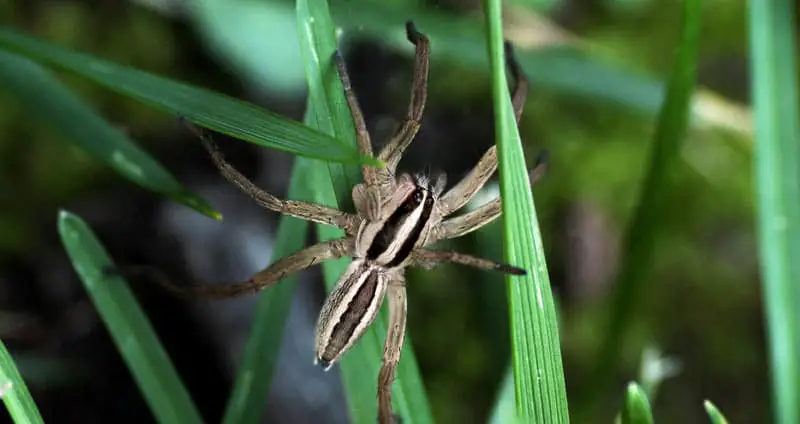
Rabid Wolf Spider Habitat
While many wolf spiders are present throughout the world, the Rabid Wolf Spider is native to a specific region in North America. This region is essentially comprised of the East Coast, spanning as far west as Texas.
No matter the state that it’s living in, these spiders usually make their home in cotton fields or wooded areas due to a combination of food availability and places to hide.
During the day, these spiders live in burrows or holes that they’ve created for themselves and cover it with debris or silk. They don’t create webs, though, as they’re hunting spiders that come out at night to feed.
While hunting, Rabid Wolf Spiders use a combination of sheer speed/agility and camouflage to hunt down or ambush their prey.
As these spiders move around a lot to hunt down their prey, they may make their way inside of your home. This isn’t as optimal an environment for them as, say, a house spider, so seeing them live inside isn’t very common.
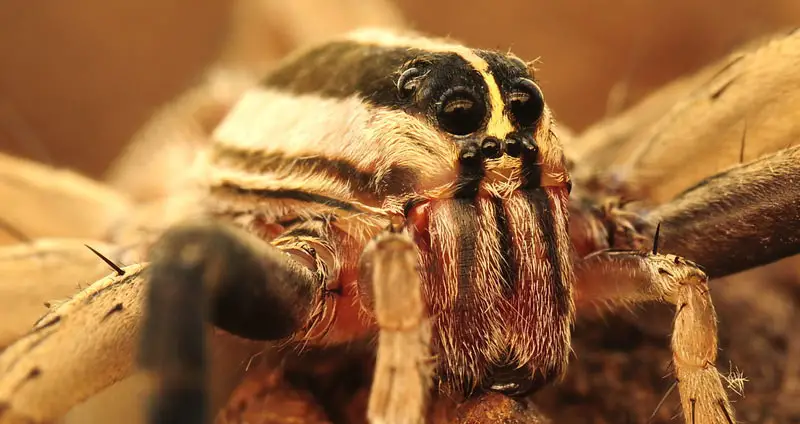
Rabid Wolf Spider Bite & Venom
While the word “rabid” in their name may allude to a very painful and dangerous bite, that’s actually not the case. The Rabid Wolf Spider’s venom is considered medically insignificant and almost never has serious effects.
The most that a Rabid Wolf Spider bite will result in is a few hours of minor localized pain.
Additionally, while this spider does possess the ability to bite humans, it doesn’t choose to most of the time. In fact, it’s possible to handle this spider (although it isn’t recommended) if done properly.
When left to its own devices, this spider is relatively laid-back and slow-moving. When threatened, it may throw up a threat pose, but it much prefers to use its impressive speed to flee as opposed to biting.
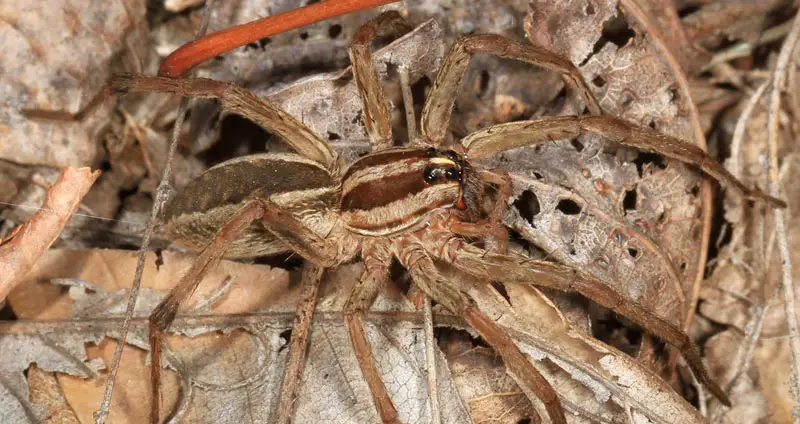
Rabid Wolf Spider Eggs & Spiderlings
The mating ritual of this spider is quite interesting. Males perform a dance to seduce the female, in addition to creating an interesting sound through the act of stridulation.
Females will then create an egg sac in their web while the male goes off to find food and another mate.
Interestingly, these egg sacs are around 1/3″ in diameter, and females drag them around with them instead of simply attaching it to their web.
As the eggs get ready to hatch, the egg sac turns from a bright white to a more muddy brown color. A single egg sac can produce between 150 and 350 spiderlings.
Newly-hatched spiderlings stay with the female on her back until they’re mature and strong enough to go off on their own and leave the web.
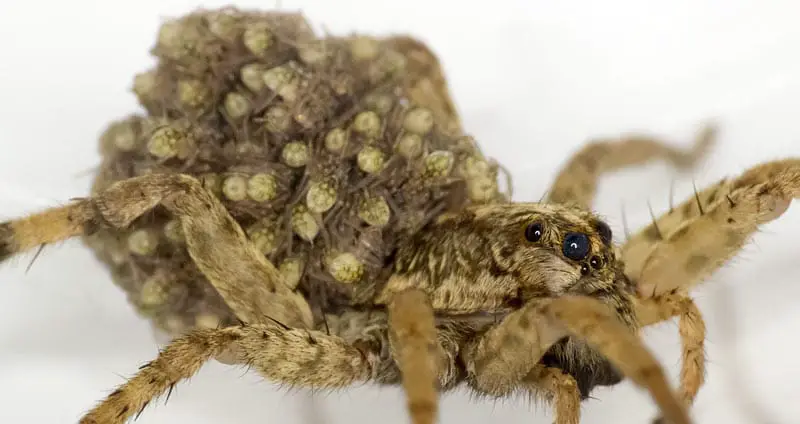
Random Rabid Wolf Spider Facts
- This spider’s sound-making ability is uncommon and is the focus of several studies on insect communication.
- Rabid Wolf Spiders possess the ability to swim.
- Its eyes reflect light like dogs and cats. Thus, flashlights at night make it very easy to spot these spiders on the ground.
- Most people leave these spiders alone as they’re excellent at controlling pests.

